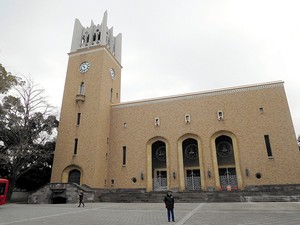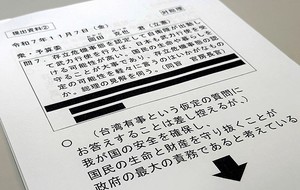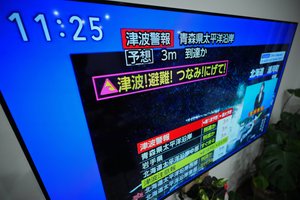By RINTARO SAKURAI/ Staff Writer
March 17, 2021 at 17:37 JST
Japan appears on track to soon hit its target for how much it relies on renewable sources of energy.
Renewables accounted for 21.7 percent of Japan’s total power generation in 2020, according to a preliminary report released by the International Energy Agency (IEA) on March 15.
The government had set a goal of increasing the renewable energy ratio to between 22 to 24 percent of the overall supply mix by fiscal 2030.
Yasushi Ninomiya, a senior researcher at the Institute of Energy Economics, Japan, is optimistic about the current trend, even though the increase in reliance on greener sources of power was partly driven by a drop in economic activities caused by the pandemic.
“Renewables are expected to grow further, and it is possible that the renewable power ratio will reach the 22 percent goal in 2021,” he said.
With the achievement of that goal seemingly on the horizon, it raises the prospect that the government will start to face new calls to set higher goals.
The IEA tallied the amount of power generation by power source, statistics it collects from its member nations, including Japan.
In 2020, Japan generated 12.7 percent more renewable energy than the previous year. Solar power generation increased by 14.6 percent while wind and biomass increased by 16 percent and 30.3 percent, respectively.
On the other hand, thermal power generated through sources such as natural gas decreased.
The ratio of nuclear power plants in operation dropped due to delays in construction of new anti-terrorism facilities and provisional disposition orders, forcing the suspension of operations at certain plants. The ratio of nuclear power generation fell to 4.3 percent from 6.6 percent in 2019.
But the renewable power ratio jumped to 21.7 percent from 18.6 percent in 2019. The sharp increase is partly attributable to slowing economic activity in Japan in 2020 due to the COVID-19 pandemic. Total power generation in the country dropped by 3.3 percent year on year.
For European member nations of the Organization for Economic Co-operation and Development, in total, renewables accounted for 44.3 percent in 2020.
The ratio in Europe was more than double that of Japan’s.
The Japanese government is planning to review its goals for the country’s energy supply mix. How much higher the government will set its target for the portion of renewable energy is expected to become a major topic in those discussions.




















A peek through the music industry’s curtain at the producers who harnessed social media to help their idols go global.
A series based on diplomatic documents declassified by Japan’s Foreign Ministry
Here is a collection of first-hand accounts by “hibakusha” atomic bomb survivors.
Cooking experts, chefs and others involved in the field of food introduce their special recipes intertwined with their paths in life.
A series about Japanese-Americans and their memories of World War II